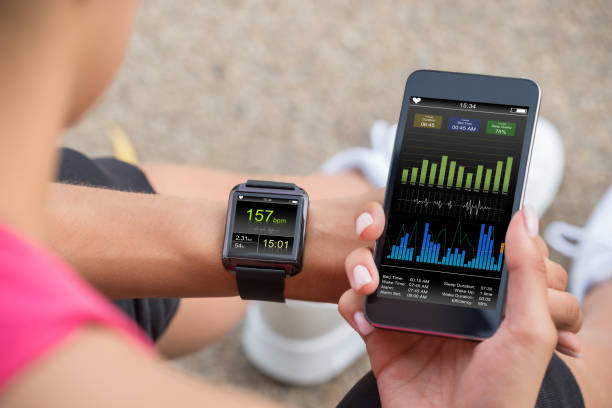Revolutionizing Your Fitness Journey: The Power of Smartphone Apps
In today's digital age, the fitness industry has undergone a significant transformation, with smartphone apps emerging as powerful tools for achieving health and wellness goals. These innovative applications have revolutionized the way people approach exercise, making it more accessible, engaging, and personalized than ever before. By harnessing the capabilities of modern smartphones, fitness apps offer a wealth of features designed to motivate, track progress, and provide expert guidance – all from the palm of your hand.

Moreover, fitness apps often include features like interval timers, rep counters, and workout logs, allowing users to structure their sessions efficiently and track their progress over time. This data-driven approach enables individuals to set realistic goals, monitor their improvements, and stay motivated throughout their fitness journey.
What types of exercises can be done using smartphone apps?
The versatility of fitness apps is truly remarkable, catering to a wide array of exercise preferences and fitness levels. Whether you’re into strength training, cardio, yoga, or high-intensity interval training (HIIT), there’s an app designed to meet your specific needs. Many apps offer a diverse library of workouts, ranging from bodyweight exercises that can be done anywhere to routines that require minimal equipment.
For those who enjoy running or cycling, GPS-enabled fitness apps can track routes, distance, pace, and calories burned. Yoga enthusiasts can access guided sessions with expert instructors, complete with soothing music and voice-over instructions. Additionally, many apps feature dance workouts, martial arts training, and even specialized routines for rehabilitation or prenatal fitness.
How do fitness apps track and measure progress?
One of the most powerful aspects of fitness apps is their ability to track and measure progress with precision. By leveraging the sensors in smartphones, these apps can accurately monitor various metrics such as steps taken, distance traveled, heart rate, and calories burned. Many apps integrate with wearable devices like smartwatches or fitness trackers to provide even more detailed data on sleep patterns, stress levels, and overall activity throughout the day.
Users can input their body measurements, weight, and fitness goals, allowing the app to generate personalized reports and visualizations of their progress over time. This data-driven approach not only helps individuals stay accountable but also enables them to make informed decisions about their fitness routines and nutrition plans.
Can fitness apps provide personalized workout plans?
Personalization is a key feature of many fitness apps, offering tailored workout plans based on individual goals, fitness levels, and preferences. By utilizing artificial intelligence and machine learning algorithms, these apps can analyze user data and create customized exercise programs that adapt and evolve as the user progresses.
Many apps offer questionnaires or assessments to determine the user’s current fitness level, available equipment, and time constraints. Based on this information, the app can generate a personalized workout schedule, complete with recommended exercises, sets, reps, and rest periods. As users log their workouts and provide feedback, the app continuously refines its recommendations, ensuring that the exercises remain challenging and effective.
How do fitness apps encourage motivation and accountability?
Maintaining motivation and accountability is often one of the biggest challenges in any fitness journey. Fitness apps address this challenge through various engaging features designed to keep users committed to their goals. Many apps incorporate gamification elements, such as achievement badges, level-ups, and point systems, turning the fitness experience into an interactive and rewarding game.
Social features are another powerful motivator in fitness apps. Users can connect with friends, join virtual communities, and participate in challenges or competitions. This social aspect not only provides support and encouragement but also creates a sense of friendly competition that can drive individuals to push their limits and stay consistent with their workouts.
What are some popular fitness apps and their key features?
| App Name | Key Features | Target Audience |
|---|---|---|
| MyFitnessPal | Calorie tracking, nutrition database, workout logging | Weight loss, general fitness |
| Strava | GPS tracking for running/cycling, social features, challenges | Runners, cyclists, endurance athletes |
| Nike Training Club | Diverse workout library, personalized plans, expert-led sessions | All fitness levels, strength and cardio focus |
| Fitbod | AI-powered workout generation, strength training focus, equipment adaptability | Gym-goers, strength training enthusiasts |
| Yoga with Adriene | Guided yoga sessions, meditation practices, beginner-friendly | Yoga practitioners, stress relief seekers |
Prices, rates, or cost estimates mentioned in this article are based on the latest available information but may change over time. Independent research is advised before making financial decisions.
The fitness app market continues to evolve, offering an ever-expanding array of options to suit different preferences and needs. From free apps with basic features to premium subscriptions with advanced capabilities, there’s a fitness app for every budget and fitness goal. As technology advances, we can expect to see even more innovative features and integrations that will further revolutionize the way we approach health and fitness in the digital age.






